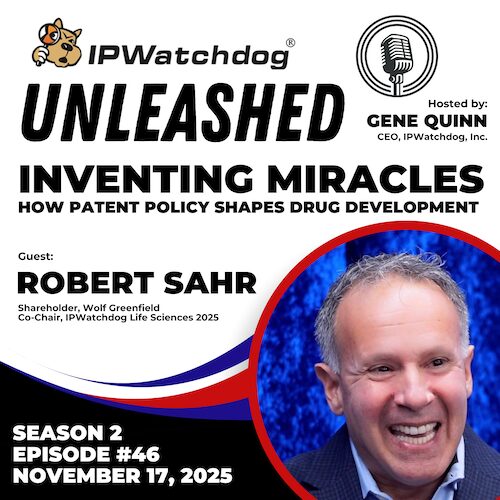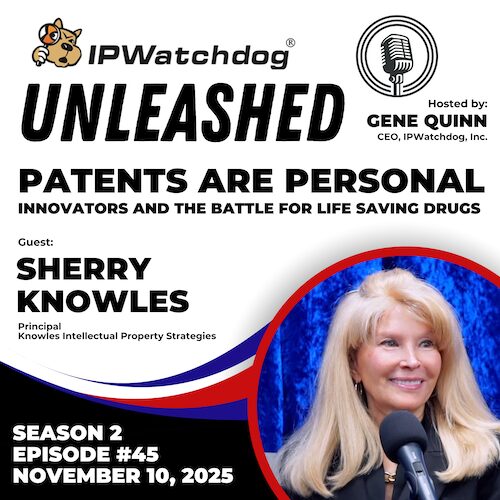“The Federal Circuit crafted a test for genericness that runs afoul of the Trademark Statute, the precedent of this Court, and every other court of appeals.” – Medisafe SCOTUS petition
 The U.S. Supreme Court on Monday denied certiorari on a petition filed by PT Medisafe asking the Court to overturn a precedential U.S. Court of Appeals for the Federal Circuit ruling upholding the U.S. Patent and Trademark Offices (USPTO’s) approach to genericness for color trademarks.
The U.S. Supreme Court on Monday denied certiorari on a petition filed by PT Medisafe asking the Court to overturn a precedential U.S. Court of Appeals for the Federal Circuit ruling upholding the U.S. Patent and Trademark Offices (USPTO’s) approach to genericness for color trademarks.
Medisafe filed a trademark application claiming the color dark green for the surface of chloroprene examination gloves. The USPTO trademark examiner found that Medisafe’s claimed mark was generic despite a declaration from Medisafe’s Executive Vice President, as well as promotional literature and color advertisements within the industry. Medisafe appealed the examiner’s rejection to the TTAB, which affirmed after applying a version of the two-step generic inquiry laid out by the Federal Circuit in H. Marvin Ginn v. International Association of Fire Chiefs (1986), which first looks at the genus of goods or services at issue, and then asks whether the claimed mark is understood by the relevant public to primarily refer to that genus.
The TTAB’s test for color marks, slightly altered from H. Marvin Ginn, first appeared in the Board’s 2019 decision in Milwaukee Electric Tool Corp. v. Freud America. Applying the test, the TTAB first rejected Medisafe’s proposed genus of gloves sold to authorized resellers, finding the relevant public to be all potential consumers of chloroprene medical examination gloves. At the second step, the TTAB found that Medisafe’s claimed green color couldn’t identify a sole source, noting website screenshots including green gloves that Medisafe did not purport to manufacture. The TTAB also rejected several pieces of evidence on nongenericness submitted by Medisafe, including survey evidence to which the Board gave no probative weight.
Medisafe argued that the Milwaukee test ignores statutory language codified at 15 U.S.C. § 1064(3), which governs the cancellation of registered marks at any time they become a “generic name.” According to Medisafe, this “generic name” requirement meant that the allegedly generic color must be a “name” for the goods or services used. The Federal Circuit had previously rejected this line of reasoning in Sunrise Jewelry Manufacturing Corp. v. Fred S.A. (1999), which involved the registration of a nautical rope design for clocks and watches. Dismissing arguments that trade dress could not be a “generic name” under Section 1064(3), the Federal Circuit held in Sunrise Jewelry that the provision must be read expansively to encompass anything that has the potential to be a source indicator. As it ruled in Sunrise Jewelry, the Federal Circuit said that following Medisafe’s reasoning would afford more protection under the Lanham Act to a color mark than a word mark, undermining the Act’s purpose.
The Federal Circuit also held that the TTAB’s findings when applying the Milwaukee test were supported by substantial evidence. The Board’s rejection of Medisafe’s narrowed relevant public of authorized glove resellers was appropriate given the fact that Medisafe’s original application sought to register the color for “[m]edical examination gloves,” with later amendments limiting the claimed goods to those “sold only to authorized resellers.” Further, the TTAB’s finding that green was so common in the relevant industry that it cannot identify a sole source was supported by the website screenshots showing green gloves from unaffiliated sellers. The Federal Circuit also agreed that several flaws existed in Medisafe’s customer declarations and consumer survey, the latter of which relied upon leading questions and was only answered by three respondents, one of whom said that Medisafe’s green gloves were not distinctive within the industry.
In its petition to the High Court, Medisafe said that “the Federal Circuit crafted a test for genericness that runs afoul of the Trademark Statute, the precedent of this Court, and every other court of appeals.” Medisafe added that the test “presents a risk of grave harm to the owners of legitimate product design trade dress who may lose protection of the trademark law.”
In Qualitex Co. v. Jacobson Prods. Co., the Supreme Court held that “a color alone can serve as a trademark because, ‘if a shape, a sound, and a fragrance can act as symbols why, one might ask, can a color not do the same?’” This suggests that color should be treated the same as any other symbol or device with respect to trademark protection, said Medisafe, and yet the Federal Circuit, and the Second and Third Circuits do, and their tests also conflict with one another. Specifically, the latter two circuits have held “that the genericness inquiry is ‘inapplicable’ to product design trade dress.”
The USPTO waived its right to respond to the petition and the Court has now denied it, leaving the CAFC opinion intact.

![[IPWatchdog Logo]](https://ipwatchdog.com/wp-content/themes/IPWatchdog%20-%202023/assets/images/temp/logo-small@2x.png)

![[Advertisement]](https://ipwatchdog.com/wp-content/uploads/2025/11/Junior-AI-Nov-25-2025-sidebar-CLE-700x500-1.jpg)
![[Advertisement]](https://ipwatchdog.com/wp-content/uploads/2025/11/IP-Author-Dec-2-2025-sidebar-700x500-1.jpg)
![[Advertisement]](https://ipwatchdog.com/wp-content/uploads/2025/11/Juristat-Ad-Firm-Cost-Management-Nov-18-Dec-31-2025-Animated-Varsity-Ad-final.gif)
![[Advertisement]](https://ipwatchdog.com/wp-content/uploads/2025/11/PTAB-Masters-2026-sidebar-early-bird-700x500-1.jpg)







![[Advertisement]](https://ipwatchdog.com/wp-content/uploads/2021/12/WEBINAR-336-x-280-px.png)
![[Advertisement]](https://ipwatchdog.com/wp-content/uploads/2021/12/Ad-4-The-Invent-Patent-System™.png)






Join the Discussion
No comments yet. Add my comment.
Add Comment